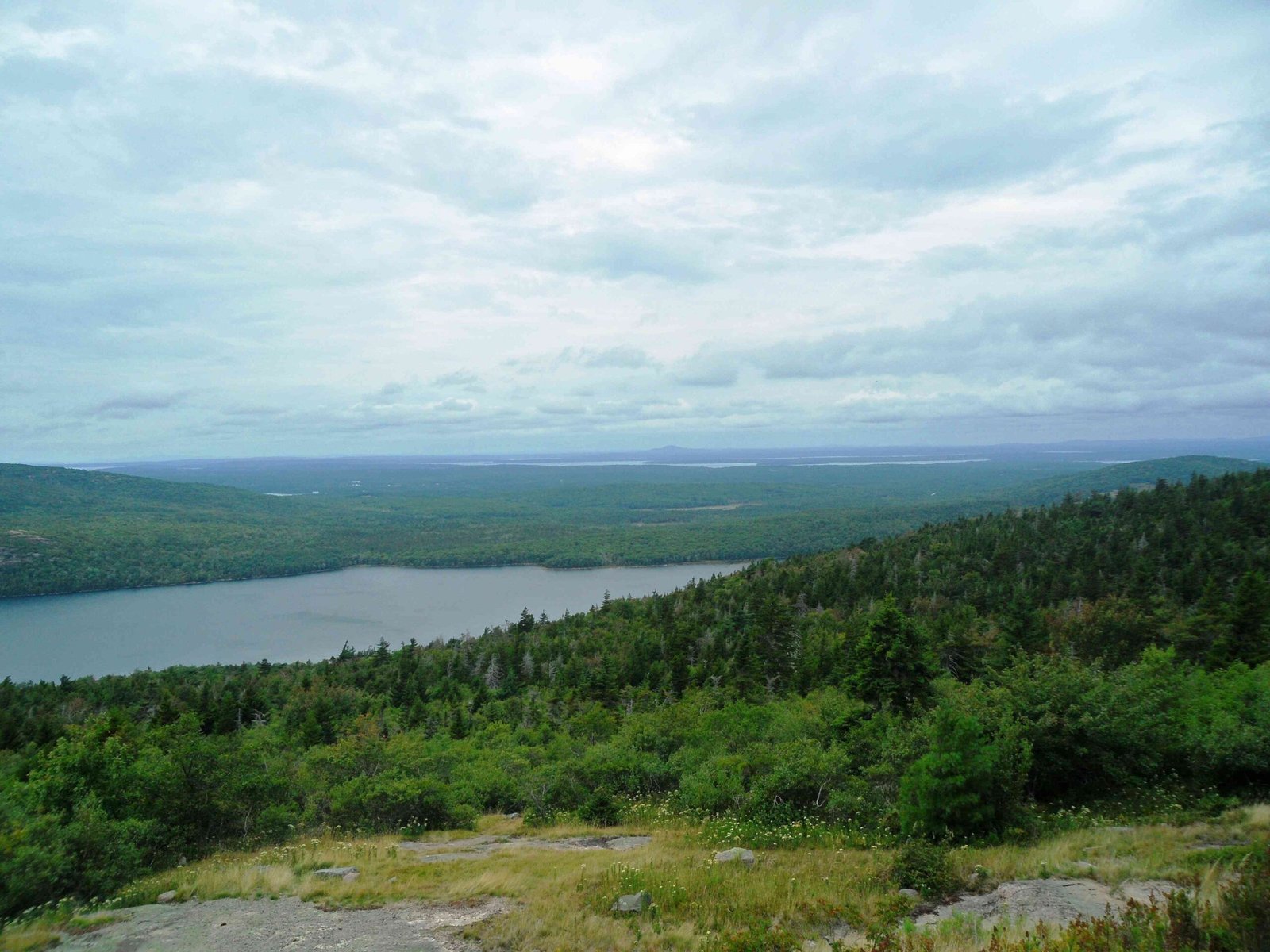Jessup Path in Acadia National Park offers an easy 1.5-mile loop hike through diverse ecosystems. This accessible trail features a wooden boardwalk through a white birch forest, gravel paths, and stunning views of the Great Meadow wetland. Hikers can enjoy scenic vistas of Dorr and Kebo Mountains while exploring the largest freshwater wetland in the park. The trail’s gentle terrain and rich biodiversity make it an ideal choice for nature enthusiasts and casual hikers alike.
What Makes Jessup Path a Unique Hiking Experience?

Jessup Path stands out among Acadia National Park’s trails for several reasons:
- Diverse Ecosystems: The trail traverses through wetlands, birch forests, and hemlock groves.
- Accessibility: With its mostly level terrain and boardwalks, it’s suitable for a wide range of hikers.
- Rich Biodiversity: Hikers can observe various plant species and potentially spot local wildlife.
- Scenic Views: The trail offers beautiful vistas of surrounding mountains and the Great Meadow.
What Should Hikers Know About the Trail’s Difficulty and Length?

Understanding the trail’s characteristics is crucial for planning your hike:
- Difficulty: Easy
- Length: 1.5 miles round trip
- Elevation Gain: Minimal, mostly level terrain
- Estimated Time: Approximately 32 minutes, though this can vary
The trail’s easy rating makes it suitable for hikers of all skill levels, including families with children and those seeking a leisurely nature walk.
What Are the Key Scenic Highlights Along Jessup Path?
Jessup Path offers several notable viewpoints and natural features:
- White Birch Forest: A picturesque boardwalk section through a boggy birch forest.
- Great Meadow: The largest freshwater wetland in Acadia National Park.
- Hemlock Forest: A shaded section with towering hemlock trees.
- Mountain Views: Intermittent views of Dorr Mountain and Kebo Mountain.
Each of these highlights provides unique photo opportunities and chances to observe the park’s diverse flora and fauna.
How Can Hikers Best Prepare for the Jessup Path Trail?
Proper preparation ensures a safe and enjoyable hiking experience:
Essential Gear
- Map of Acadia National Park
- Water bottle
- Snacks
- Compass
- Extra layers of clothing
- Closed-toe shoes with good traction
Safety Tips
- Check the weather forecast before your hike.
- Stay on designated trails to minimize environmental impact and reduce tick exposure.
- Perform a tick check after your hike.
- Use caution when crossing the Park Loop Road, as there are no designated crosswalks.
What Are the Best Access Points for Jessup Path?
Accessing Jessup Path is straightforward:
- Primary Parking: Sieur de Monts parking lot
-
Note: Parking is limited from 9 am to 3 pm during summer months
-
Public Transportation: Island Explorer Bus to Sieur de Monts
- Check current schedules for routes and times
How Does Jessup Path Showcase Acadia’s Natural Beauty?
Jessup Path exemplifies Acadia National Park’s diverse ecosystems:
- Wetland Ecology: The Great Meadow section highlights the importance of wetlands in the park’s ecosystem.
- Forest Diversity: Transitions between birch and hemlock forests demonstrate the park’s varied habitats.
- Mountain Scenery: Views of Dorr and Kebo Mountains provide a backdrop that showcases Acadia’s rugged landscape.
- Seasonal Changes: The trail’s appearance transforms throughout the year, from spring wildflowers to autumn foliage.
What Wildlife Might Hikers Encounter on Jessup Path?
While wildlife sightings are never guaranteed, Jessup Path’s diverse habitats support various species:
- Birds: Warblers, woodpeckers, and waterfowl
- Mammals: White-tailed deer, red squirrels, and possibly beavers
- Amphibians: Frogs and salamanders in wetland areas
- Insects: Butterflies, dragonflies, and various pollinators
Remember to observe wildlife from a distance and never feed or approach animals.
How Does Jessup Path Connect to Other Acadia Trails?
Jessup Path is part of a larger trail network in Acadia National Park:
- Connects to the Hemlock Path, forming a loop
- Proximity to the Wild Gardens of Acadia at Sieur de Monts
- Access to the Beachcroft Path, leading to the summit of Champlain Mountain
This connectivity allows hikers to extend their journey or combine Jessup Path with other nearby trails for a longer adventure.
What Are the Best Times to Hike Jessup Path?
Consider these factors when planning your hike:
- Seasons:
- Spring: Wildflowers bloom, but trails may be muddy
- Summer: Peak season with warmest temperatures
- Fall: Beautiful foliage colors, cooler temperatures
-
Winter: Possible snowshoeing opportunity, but check trail conditions
-
Time of Day:
- Early morning: Less crowded, better wildlife viewing
- Midday: Warmest temperatures, best lighting for photography
-
Late afternoon: Softer light for scenic views
-
Crowd Levels:
- Weekdays are generally less crowded than weekends
- Early morning and late afternoon tend to be quieter
How Does Jessup Path Contribute to Acadia’s Conservation Efforts?
Jessup Path plays a role in Acadia’s conservation strategy:
- Habitat Protection: The boardwalk design minimizes impact on sensitive wetland ecosystems.
- Education: Interpretive signs along the trail inform visitors about local ecology and conservation.
- Accessibility: By providing an easy trail option, it helps distribute visitor impact across the park.
- Research: The area serves as a site for ecological studies and monitoring.
By hiking responsibly and staying on designated paths, visitors contribute to the preservation of this unique environment for future generations.
Jessup Path in Acadia National Park offers a gentle yet rewarding hiking experience, showcasing the park’s diverse ecosystems and scenic beauty. Whether you’re a casual nature enthusiast or an experienced hiker looking for an easy day out, this trail provides an excellent opportunity to immerse yourself in Acadia’s natural wonders. Remember to practice Leave No Trace principles and enjoy the unique landscapes that make Acadia National Park a true national treasure.
References:
- https://www.nps.gov/thingstodo/hike-jesup-path-hemlock-path-loop.htm
- https://www.mainetrailfinder.com/trails/trail/acadia-national-park-jesup-path-and-hemlock-path-loop
- https://www.nps.gov/thingstodo/hike-sieur-de-monts-to-jesup-path-with-island-explorer-bus.htm

